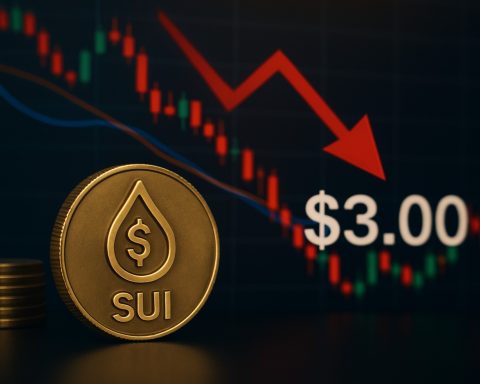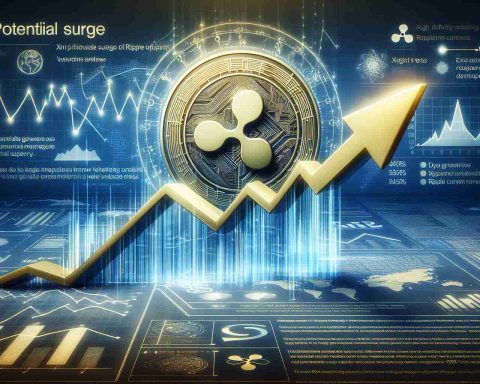- President Trump has signed an executive order to establish a U.S. Strategic Bitcoin Reserve, marking a bold step into the digital era.
- This move positions Bitcoin alongside traditional strategic reserves such as gold and oil, reflecting its growing significance as a store of value.
- Senator Elizabeth Warren raises concerns over financial transparency and potential conflicts of interest involving the appointed Crypto Czar, David Sacks.
- The inclusion of Solana and the launch of Trump’s meme coin raise critical questions about the political and strategic intentions behind this decision.
- Market reactions are pronounced, with a significant drop in Bitcoin prices following the announcement.
- Trump’s order suggests a shift in fiscal policy and a reevaluation of value and trust, as digital assets like Bitcoin are considered hedges against inflation.
- Whether this strengthens U.S. leadership in digital asset governance or fuels political debate, the initiative signifies a pivotal change in economic thinking.
Imagine a bustling Washington D.C., where the air buzzes with the news that could redefine global financial landscapes. President Donald Trump has signed an executive order to craft a U.S. Strategic Bitcoin Reserve, signaling an audacious embrace of a digital era pulsating with possibility and risk. This historic decree places Bitcoin — the enigmatic cryptocurrency born in the wake of the 2008 financial crisis — alongside time-honored strategic reserves such as gold and oil.
The decision evokes vivid colors in the halls of power, a place where futures are crafted and certainties challenged. Here, Bitcoin is no longer just an insurgent currency but a recognized repository of value, a brand-new jewel in the treasury of America’s strategic assets.
This narrative, however, is not without its protagonists and antagonists. Senator Elizabeth Warren of Massachusetts has emerged as a vocal critic, echoing her concerns like a chorus that questions secrecy and motives. She demands financial transparency from the appointed Crypto Czar David Sacks amid whispers of conflicting interests and preemptive asset divestitures. Warren’s sharp scrutiny punctuates the political landscape, scripting a drama more riveting than mere policy implementation.
At the heart of this unfolding story is Trump’s surprising inclusion of Solana in the cryptocurrency vault, raising questions about the symbolic weight of launching his “Official Trump” meme coin on the network. The backdrop of political motives against strategic intent casts a gray shadow over what some applaud as a visionary move. Others see it as a tale of a potential snake oil, obscuring the purer gold of true fiscal prudence.
While the cryptocurrency community grapples with mixed reactions, the market itself responds with a visceral shudder. Bitcoin prices plummet over 5%, a manifestation of expectations dashed against the reality that the reserve will merely house confiscated assets—no new purchases to stir the market pot. This isn’t the anticipated government buying spree, but rather a formalization of existing practices, reaffirming what already lies within governmental vaults.
Capturing the sentiment of a yet-uncertain future, Bitcoin pioneer Charlie Shrem speaks of inexorable change. The concept of a nation-state endorsing Bitcoin as a strategic reserve might have once seemed a reverie, but it is now etched into the reality with the ink of an executive order. However, the vagueness of this order means that it could be rewritten or outright revoked in future political plots, leaving Bitcoin’s national story unwritten and full of intrigue.
Despite these uncertainties, Trump’s move underscores a critical thematic thread: Bitcoin is moving from the fringes into the heart of fiscal policy debates. The executive order isn’t just about digital currency but about a rethinking of value and trust. In a volatile environment, digital assets like Bitcoin are being seen increasingly as hedges against inflation, offering a reliable store of value amidst market whims.
Beneath the political and financial maneuvering lies a crucial question: can Bitcoin, with its roller-coaster history of ups and downs, fulfill the classical role of gold? Its scarcity and security make a compelling case for its inclusion in the reserves of the world’s leading economy, but its digital and decentralized nature might simultaneously challenge classical economic theories.
Whether this initiative solidifies U.S. leadership in digital asset governance or becomes entangled in partisan debates, the establishment of a Bitcoin reserve highlights a significant pivot in how we view money, value, and national security. This story, like sagas of old, weaves together ambition and caution, driven by characters navigating the complex corridors of power and potential. As the world watches, the U.S. seems ready to redraw the maps of tomorrow’s economy, and in doing so, it propels Bitcoin from an outsider to a central player in a new age of financial exploration.
U.S. Embraces Bitcoin: A Strategic Reserve or a Fiscal Gamble?
As Washington D.C. hums with anticipation and debate, President Donald Trump’s executive order establishing a U.S. Strategic Bitcoin Reserve represents a monumental shift in how digital currencies are perceived at the national level. Here’s a deeper dive into this historic move, including its potential implications, controversies, and what the future might hold for Bitcoin and the broader cryptocurrency landscape.
How Trump’s Bitcoin Reserve Could Reshape Fiscal Policy
The move to create a Bitcoin reserve aligns with an evolving global narrative that challenges traditional financial systems. With the inclusion of Bitcoin as a strategic asset, the U.S. signals a seismic shift towards embracing blockchain innovations. This decision also reflects an acceptance of digital currencies as legitimate stores of value, similar to gold and oil—resources historically seen as financial safety nets.
How-To Steps for Understanding U.S. Policy on Bitcoin:
1. Study the Executive Order: Grasp the objectives outlined by the administration. Understanding the strategic goals can provide insights into future policy directions.
2. Monitor Political Reactions: Follow political commentaries, especially from figures like Senator Elizabeth Warren, for critiques and counterpoints.
3. Analyze Market Responses: Watch Bitcoin price fluctuations and trading volumes post-announcement to gauge market sentiment.
4. Explore Blockchain Technology: Learn about Bitcoin and Solana networks to understand the technological implications of these policies.
Real-World Use Cases and Industry Trends
1. Hedging Against Inflation: Bitcoin can serve as a hedge in today’s volatile economic climate. As regulatory frameworks evolve, institutional adoption could become more prevalent.
2. Secured Transactions: Cryptocurrencies offer a secure platform for transactions, promising reduced fraud risks.
3. Potential for Innovation: Blockchain technology could drive innovation in various sectors, reshaping everything from supply chain logistics to voting systems.
Market Forecasts and Industry Trends
The global cryptocurrency market continues to burgeon, with an increasing number of countries exploring digital currencies. The establishment of a strategic Bitcoin reserve by a leading economy like the U.S. could accelerate international discussions on the adoption and regulation of cryptocurrencies. Analysts predict that this move may encourage other countries to consider digital assets for their reserves as well.
Controversies and Limitations
Critics like Senator Elizabeth Warren raise concerns about transparency and the actual benefits of such a move. The lack of new Bitcoin purchases as part of the reserve strategy has also disappointed market participants, reflecting in falling Bitcoin prices. Moreover, the nature of Bitcoin, with its volatility and decentralized operation, poses challenges in aligning with classical economic models seen in traditional asset reserves.
Potential Questions Addressed
1. Why Bitcoin and Not Another Cryptocurrency? Bitcoin’s established history, security, and scarcity make it a preferred choice. However, the inclusion of Solana hints at a potential broader approach towards digital assets.
2. Will This Affect Bitcoin’s Price? The lack of new government purchases initially led to a price drop, but long-term effects depend on the strategic implementation and global reactions.
3. Is This Secure and Sustainable? While blockchain technology offers high security, its environmental impact and energy consumption remain notable concerns.
Quick Tips and Actionable Recommendations
– Diversify Investments: Considering the volatility in cryptocurrency markets, diversifying portfolios could offer better returns and reduced risks.
– Stay Informed: Regular updates on policy changes and technological advancements can help in making informed decisions related to digital currencies.
– Explore Blockchain Opportunities: Whether for professional growth or investment, understanding blockchain usage can open new avenues for engagement.
Conclusion
While the U.S. Strategic Bitcoin Reserve initiative might be shrouded in political drama and debate, it is undeniable that this executive order signifies an acknowledgment of the digital age in national fiscal strategies. The implications are vast, affecting everything from global economic policies to individual investment strategies. As this narrative unfolds, staying informed and agile will be crucial in navigating the complexities of the modern financial landscape.
For more on financial developments and strategic economic policies, visit the official White House and Federal Reserve websites.









